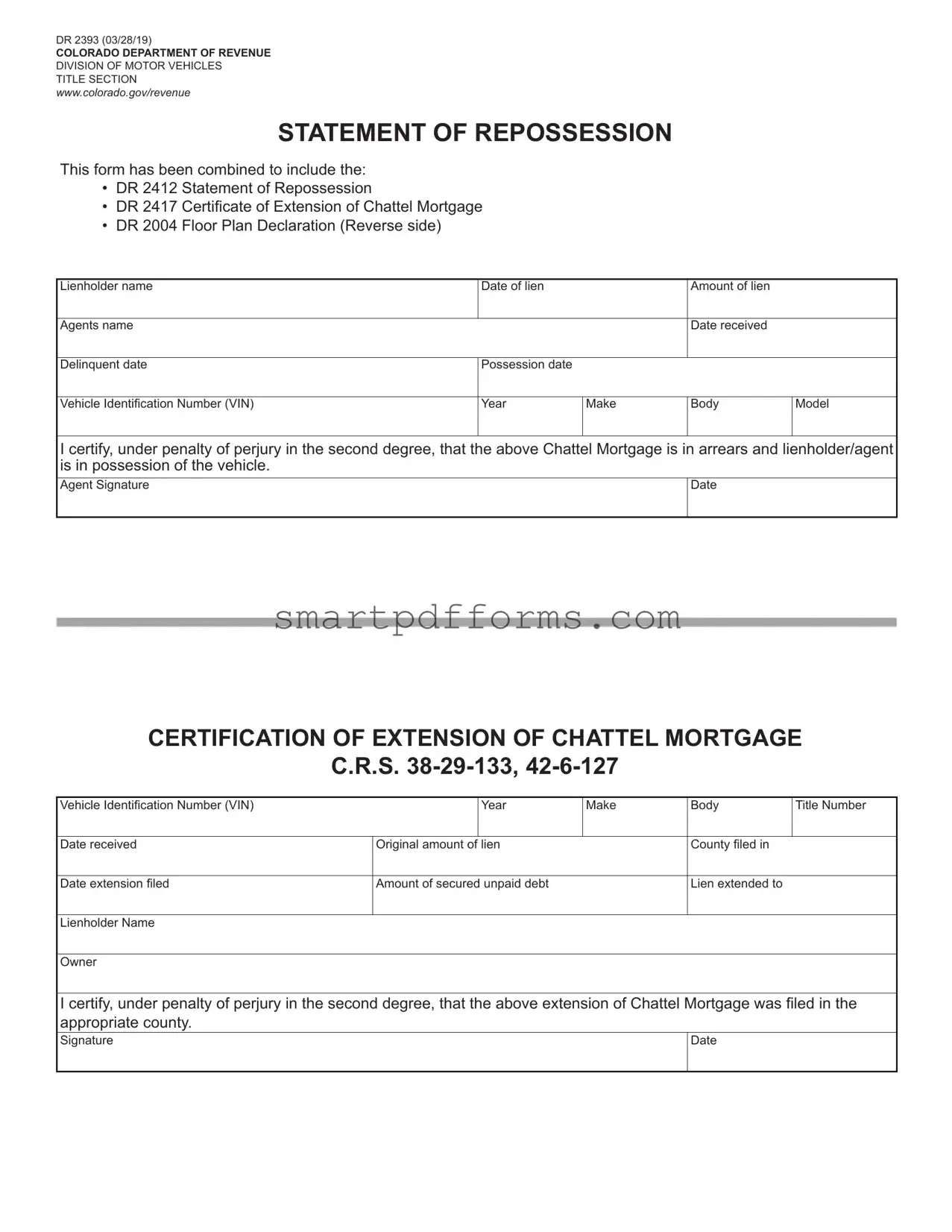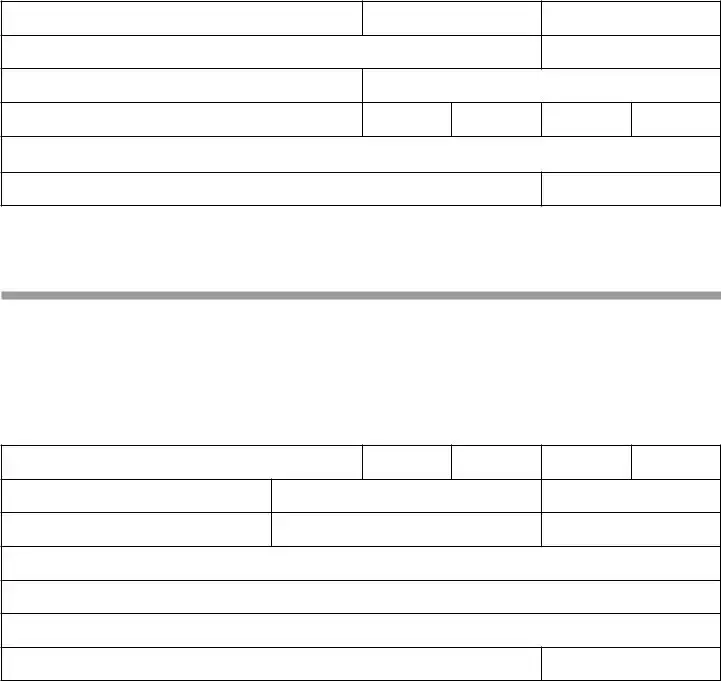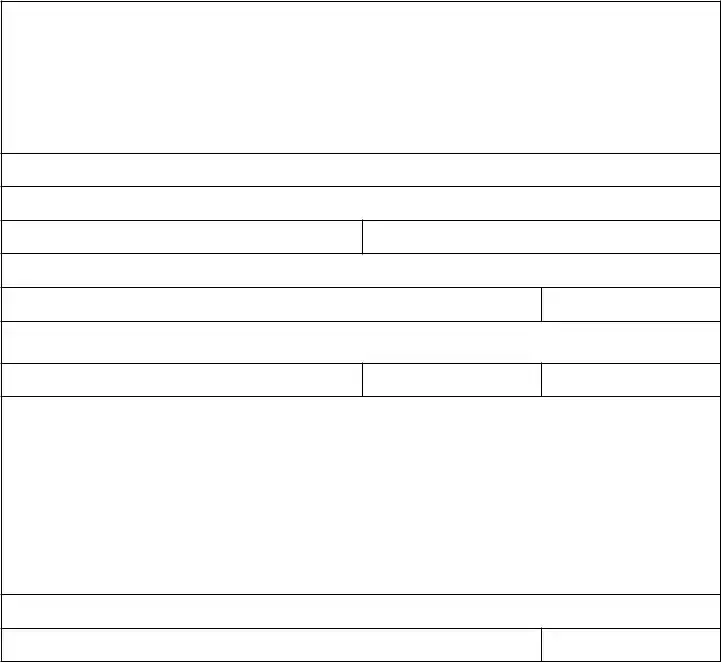In the complex world of vehicle financing and repossession, the Colorado Department of Revenue, Division of Motor Vehicles, offers a vital tool for lienholders navigating the intricacies of reclaiming possession of a vehicle: the Statement of Repossession form (DR 2393, revised on 03/28/19). This multifaceted legal document serves several critical functions—it merges the DR 2412 Statement of Repossession, the DR 2417 Certificate of Extension of Chattel Mortgage, and on its reverse, the DR 2004 Floor Plan Declaration, streamlining the process and paperwork required for lienholders to legally assert their rights. For lienholders, this form is a declaration under penalty of perjury that a chattel mortgage is in default and that possession of the vehicle has been taken. Detailed within are necessities such as the lienholder's name, the date the lien was placed, the amount of the lien, as well as the agent’s information, making it comprehensive in nature. It also meticulously records the vehicle's identification number (VIN), year, make, body, and model, ensuring all parties have complete and transparent information about the repossession. Furthermore, it certifies, also under penalty of perjury, extension of chattel mortgage particulars, including the original amount of lien, the county in which it was filed, and any secured unpaid debt. For dealers, the Floor Plan Declaration aspect specifies that all documents of ownership must accompany the form, outlining protocols for transferring the vehicle whether the lienholder is a licensed Colorado dealer or not. Essential for the lienholder is the affirmation that the note and chattel mortgage executed against a dealer for the described vehicle remains a valid lien, now in default, granting them possession of the vehicle. In sum, the Statement of Repossession form is a critical document, laying down the procedure and legal framework necessary for the efficient and lawful repossession of vehicles, embodying the intersection of legal requirements and practical necessity in the realm of secured transactions.



 the note and chattel mortgage is a valid and existing lien against the vehicles held under agreement
the note and chattel mortgage is a valid and existing lien against the vehicles held under agreement the following described motor vehicle is included in that agreement
the following described motor vehicle is included in that agreement the note and chattel mortgage described above is in default
the note and chattel mortgage described above is in default in accordance with the provisions of the chattel mortgage
in accordance with the provisions of the chattel mortgage the vehicle is now in his
the vehicle is now in his